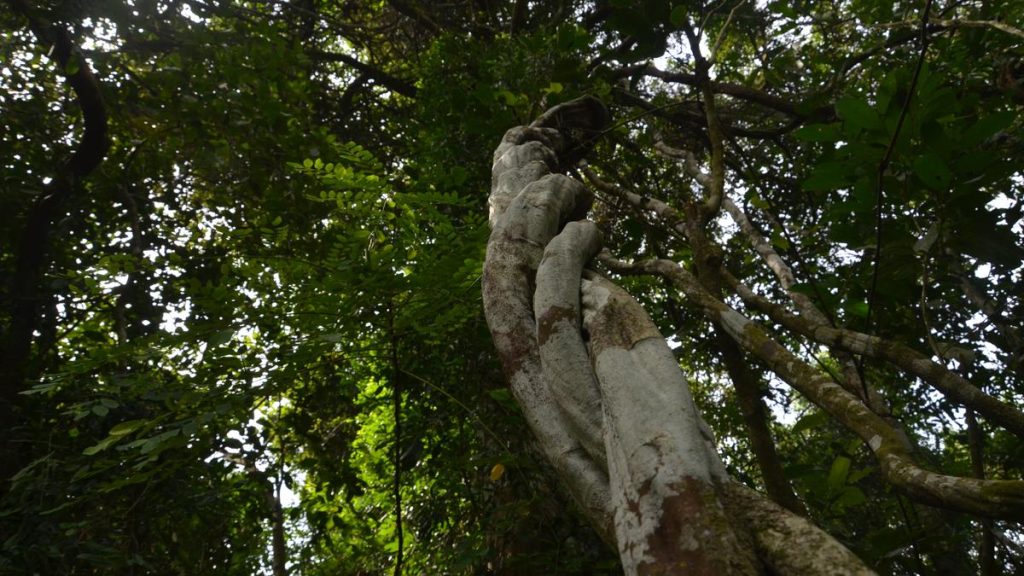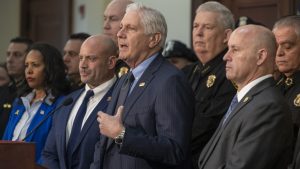The story so far:
On December 18, 2024, the Supreme Court directed the Forest Department of Rajasthan to map on the ground and via satellite every ‘sacred grove’ in detail. They were to be identified irrespective of their size and based “solely on their purpose and their cultural and ecological significance to the local community”. After mapping, the court directed the department to classify them as ‘forests’ and notify them as ‘community reserves’ under the Wildlife Protection Act (WLPA) 1972. Effectively, the decision would transfer the sacred groves from community protection to forest officialdom for the purposes of conservation. The move defies the Forest Rights Act (FRA) 2006, which by virtue of being enacted later overrides the WLPA, and which the government had intended to do the reverse: i.e. recognise traditional and customary rights over all forest lands and transfer them back from the Forest Department to gram sabhas.
The sacred groves of Rajasthan, also known as ‘orans’, ‘malvan’, ‘deo ghat’, and ‘baugh’, number around 25,000 and cover about six lakh hectares of the State.
What was the case about?
In T.N. Godavarman v. Union of India, the Supreme Court ordered that ‘forest land’ in Section 2 of the Forest (Conservation) Act, 1980, “will not only include ‘forest’ as understood in the dictionary sense, but also any area recorded as forest in the government record irrespective of the ownership of the land”. The court then directed State governments to constitute expert committees to identify areas that met this understanding of ‘forest land’.
In 2004, the expert committee report of the Rajasthan government identified only those sacred groves that fulfilled the criteria of ‘deemed forests’ — that is, trees covering 5 hectares of land with at least 200 trees per hectare were classified as ‘forests’, while the remainder was not.
The Supreme Court’s Central Empowered Committee (CEC) disagreed with this choice because it was inconsistent with the court’s definition of ‘forest land’. The CEC also said all such areas diverted for non-forestry purposes before 1980 could be exempted. The apex court agreed with the CEC and directed Rajasthan to implement the recommendations post-haste in 2018.
In early 2024, the Rajasthan government — responding to interlocutory applications seeking directions to implement this order — said that sacred groves were being identified and documented as ‘forest lands’. Ironically, the Rajasthan Forest Policy 2023 omitted the detailed framework for the protection of sacred groves specified in its 2010 policy.
The present order came in response to a challenge to these positions at the Supreme Court.
What do sacred groves mean to communities?
Sacred groves are community-regulated and conserved patches of forest land. They are created and managed traditionally by communities in various ways deeply rooted in their identity. The groves are kept inviolate through customary laws and taboos, many of which completely prohibit the extraction of any resources in any form, except for custodians to access medicinal plants. The grove’s conservation ethos is strongly linked to piety and sanctity, enforced in terms of the community’s relationship with its spirits and gods.
India is estimated to have 1-10 lakh sacred groves of this nature — the highest in the world. They are called ‘devara kadu’ in Karnataka, ‘devban’ in Himachal Pradesh, ‘kavu’ and ‘sarpa kavu’ in Kerala, ‘sarna’ in the Chota Nagpur Plateau region, ‘devbani’ in Chhattisgarh, ‘jahera’ or ‘thakuramma’ in Odisha, ‘devgudi’ by the Muria, the Madia, and the Gond adivasis of Maharashtra and Chhattisgarh, ‘ki law lyngdoh’, ‘ki law kyntang’ or ‘ki law niam’ in Meghalaya, ‘sabarkantha’, ‘dahod’ or ‘banaskantha’ in Gujarat, and so forth.
They are often associated with temples, monasteries, shrines, pilgrim sites, and/or burial grounds. These sites are thus also repositories of various herbal medicines and gathering points for local healers, as much as they are biodiversity hotspots. They are also, frequently, sources of perennial streams that support the growth of unique and endemic flora and fauna.
Local legends, myths, and beliefs surround sacred groves, and communities have transmitted them orally through several generations as a matter of conserving their cultural identities. Communities’ relationships with their groves have also helped mitigate the effects of floods, landslides, and droughts on their lives while stabilising the soil and preventing erosion. Anthropologists have also documented the impact of sacred groves on their respective communities’ mental and physical well-being.
What are community reserves?
The WLPA 2002 introduced the category of Protected Areas called ‘community reserves’, in addition to ‘national parks’ and ‘sanctuaries’.
Community reserves are notified over community or private land where locals have volunteered to conserve habitats to protect “fauna, flora, and traditional or cultural conservation values and practises”.
The community, or even the individual, is thus required to prevent any offences specified in the WLPA, assist the authorities in arresting any offenders, report the “death of any wild animal,” and prevent or extinguish any fires. The offences include damaging the boundary marks, teasing or molesting wild animals, littering in the community reserve, setting fires or allowing a fire to burn, and using any chemical substances that endanger wildlife.
Further, a land-use pattern within a community reserve cannot be changed without the approval of the reserve management committee and the State government. The Chief Wildlife Warden, under whose jurisdiction community reserves fall, effectively has overall control of the reserve and its management plan.
The Supreme Court’s directions also obligate the State government to constitute a ‘Community Reserve Management Committee’ to conserve, maintain, and manage the reserve and to protect wildlife and habitats. This committee is to have at least five members nominated by the gram panchayat (or members of the gram sabha if there is no gram panchayat) and a representative of the Forest or Wildlife Department in whose jurisdiction the community reserve is located. If the reserve is on private land, the committee will consist of the land owner, a representative of the Forest or Wildlife Department, and a representative of the concerned Panchayat or tribal community.
The elected chairperson of the committee will be designated the reserve’s ‘Honorary Wildlife Warden’.
The court also recommended that the Union Environment Ministry identify and map sacred groves nationwide and formulate a policy for their governance and management.
How will the Forest Department’s takeover clash with the FRA’s provisions?
If sacred groves had fallen under the FRA’s purview, they would have been part of ‘community forest resources’. According to the FRA, a community forest resource is the “customary common forest land within the traditional or customary boundaries of the village… including reserved forests, protected forests and protected areas such as sanctuaries and national parks to which the community had traditional access”.
Thus, the gram sabhas would have been the statutory authority to protect, regenerate, conserve or manage community forest resources, along with the wildlife, flora, and biodiversity within. The gram sabhas would also have been responsible for preventing activities that harm their cultural and natural heritage.
To this end, the sabha would have to constitute its own Community Forest Resource Management Committees to develop and execute the managed plan approved by the gram sabha. And State governments would be duty-bound to support these plans.
All sacred groves in forest areas are currently subsets of community forest resources, which are in turn under the jurisdiction of gram sabhas, and not the Forest or the Wildlife department. All sacred groves outside forest land, if any, also come under the FRA’s purview if a proposal to notify them as ‘forest land’ comes into being. In sum, notifying sacred groves as community reserves controlled by the Forest Department could conflict with the customs of communities, and with the community forest resources notified by the FRA, which complies with the customs by bringing them under its governance.
C.R. Bijoy examines natural resource conflicts and governance issues
Published – February 05, 2025 10:43 pm IST








